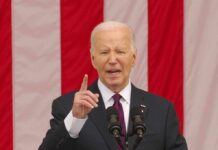The U.S. Army has deployed troops and advanced rocket systems to Alaska’s Shemya Island, showcasing its rapid response capabilities amid rising tensions with Russia and China in the Arctic region.
At a Glance
- U.S. Army deploys troops and advanced rocket systems to Shemya Island, Alaska
- Operation involves elements of the 11th Airborne Division and Multi-Domain Task Forces
- Deployment aims to demonstrate rapid response capabilities in the Arctic and Indo-Pacific
- Move comes in response to increased Russian and Chinese military activities near Alaska
Strategic Deployment to Alaska’s Frontier
On September 12, 2024, the U.S. Army launched a significant military operation on Shemya Island, located in Alaska’s remote Aleutian chain. This strategic move involved deploying elements of the 11th Airborne Division and the 1st and 3rd Multi-Domain Task Forces to the island, demonstrating the military’s ability to rapidly project force in response to evolving geopolitical tensions in the Arctic and Indo-Pacific regions.
The operation, conducted in collaboration with the U.S. Air Force and Alaska Air National Guard, saw the deployment of approximately 130 soldiers along with advanced military hardware, including the M142 High Mobility Artillery Rocket System (HIMARS). This show of force is a clear signal of the United States’ commitment to maintaining a strong presence in the strategically important Arctic region.
US Army 11th Airborne Division, and 1st and 3rd Multi Domain Task Forces landed on Alaska's Shemya Island in North Pacific Ocean on Sept. 12 as part of a force projection operation, deploying with M142 High Mobility Artillery Rocket System and Q-53 Radar.https://t.co/bse2hUmPmi pic.twitter.com/7dTzWOhtJJ
— Ryan Chan 陳家翹 (@ryankakiuchan) September 15, 2024
Responding to Increased Regional Tensions
The timing of this deployment is particularly significant, coming in the wake of increased military activities by Russia and China near Alaska. In June, a joint Russian-Chinese bomber patrol in the region raised concerns about the growing cooperation between these two nations in challenging U.S. interests in the Arctic. The U.S. Army’s operation on Shemya Island serves as a direct response to these provocations, demonstrating America’s ability to rapidly deploy significant firepower to remote locations with little notice.
“As the number of adversarial exercises increases around Alaska and throughout the region, including June’s joint Russian-Chinese bomber patrol, the operation to Shemya Island demonstrates the division’s ability to respond to events in the Indo-Pacific or across the globe, with a ready, lethal force within hours,” said Maj. Gen. Joseph Hilbert, commanding general of the 11th Airborne Division.
This deployment coincides with Russia’s largest naval drills since the Cold War, involving over 400 ships and 90,000 troops. The scale of these Russian exercises, combined with the joint activities with China, underscores the growing challenges to U.S. interests in the region and the importance of maintaining a strong and flexible military presence.
Strengthening Arctic Defense Capabilities
The 11th Airborne Division, stationed at Joint Base Elmendorf-Richardson and Fort Wainwright in Alaska, plays a crucial role in defending the northern and western reaches of the United States. As climate change makes the Arctic more accessible, the strategic importance of this region continues to grow. The division’s deployment to Shemya Island demonstrates the U.S. Army’s commitment to adapting its strategies and capabilities to meet these evolving challenges.
“The Army looks at us to be Arctic experts,” Hilbert said, and as a part of US Army Pacific, “we’ve got to be ready to operate in the region as a part of the land power there.”
By deploying a mix of infantry, artillery, and advanced communications equipment, the U.S. Army is showcasing its ability to operate effectively in the harsh Arctic environment. This operation not only serves as a deterrent to potential adversaries but also reassures allies of America’s commitment to regional security and stability.
Sources:
- Arctic Angels deploy to Aleutian Islands
- The US Army put on a sudden show of force out on the far edge of Alaska to send the message it can as Russia and China partner in the Pacific
- The US Army put on a sudden show of force out on the far edge of Alaska to send the message it can as Russia and China partner in the Pacific











